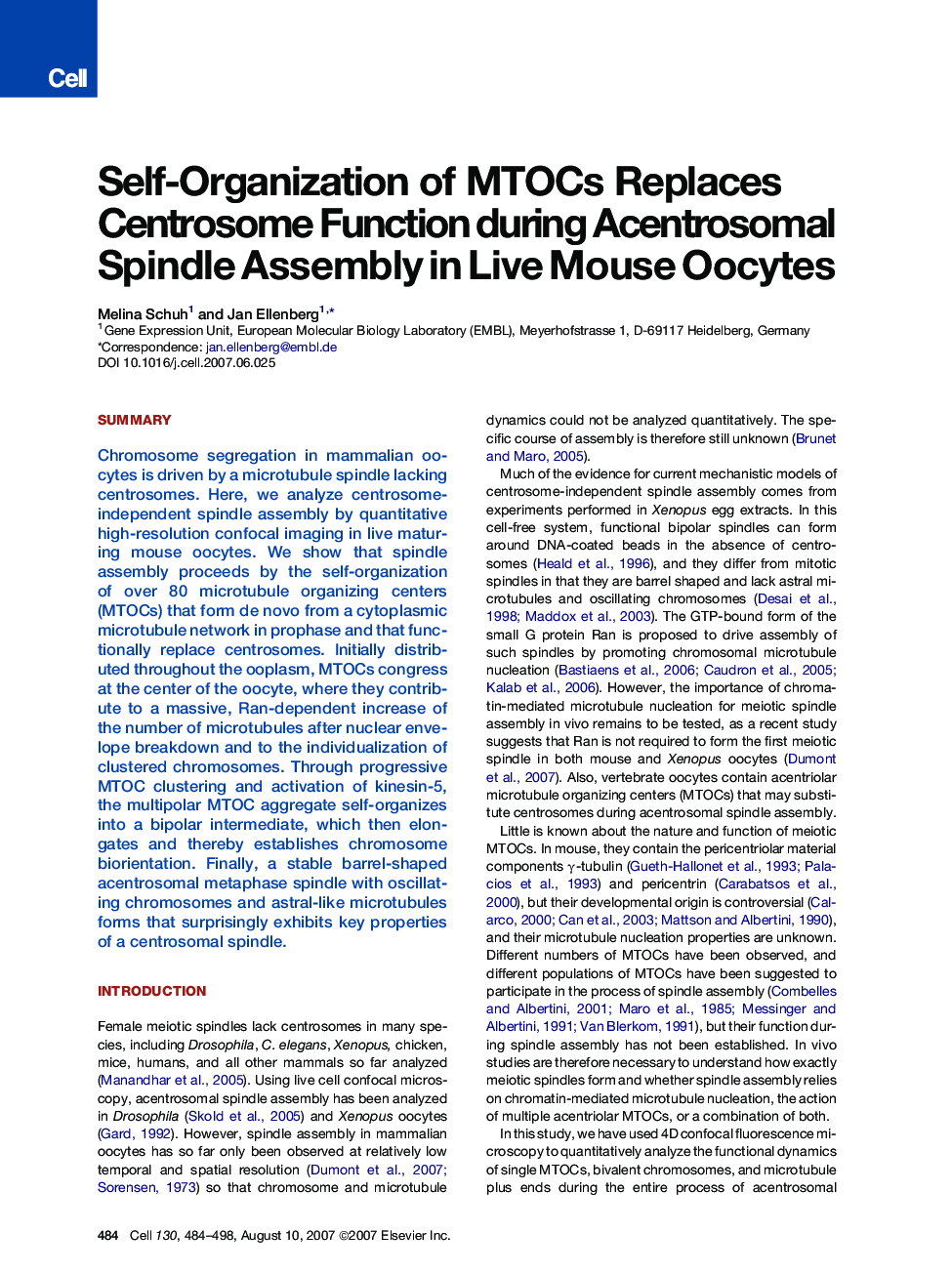| Article ID | Journal | Published Year | Pages | File Type |
|---|---|---|---|---|
| 2037787 | Cell | 2007 | 15 Pages |
SummaryChromosome segregation in mammalian oocytes is driven by a microtubule spindle lacking centrosomes. Here, we analyze centrosome-independent spindle assembly by quantitative high-resolution confocal imaging in live maturing mouse oocytes. We show that spindle assembly proceeds by the self-organization of over 80 microtubule organizing centers (MTOCs) that form de novo from a cytoplasmic microtubule network in prophase and that functionally replace centrosomes. Initially distributed throughout the ooplasm, MTOCs congress at the center of the oocyte, where they contribute to a massive, Ran-dependent increase of the number of microtubules after nuclear envelope breakdown and to the individualization of clustered chromosomes. Through progressive MTOC clustering and activation of kinesin-5, the multipolar MTOC aggregate self-organizes into a bipolar intermediate, which then elongates and thereby establishes chromosome biorientation. Finally, a stable barrel-shaped acentrosomal metaphase spindle with oscillating chromosomes and astral-like microtubules forms that surprisingly exhibits key properties of a centrosomal spindle.
